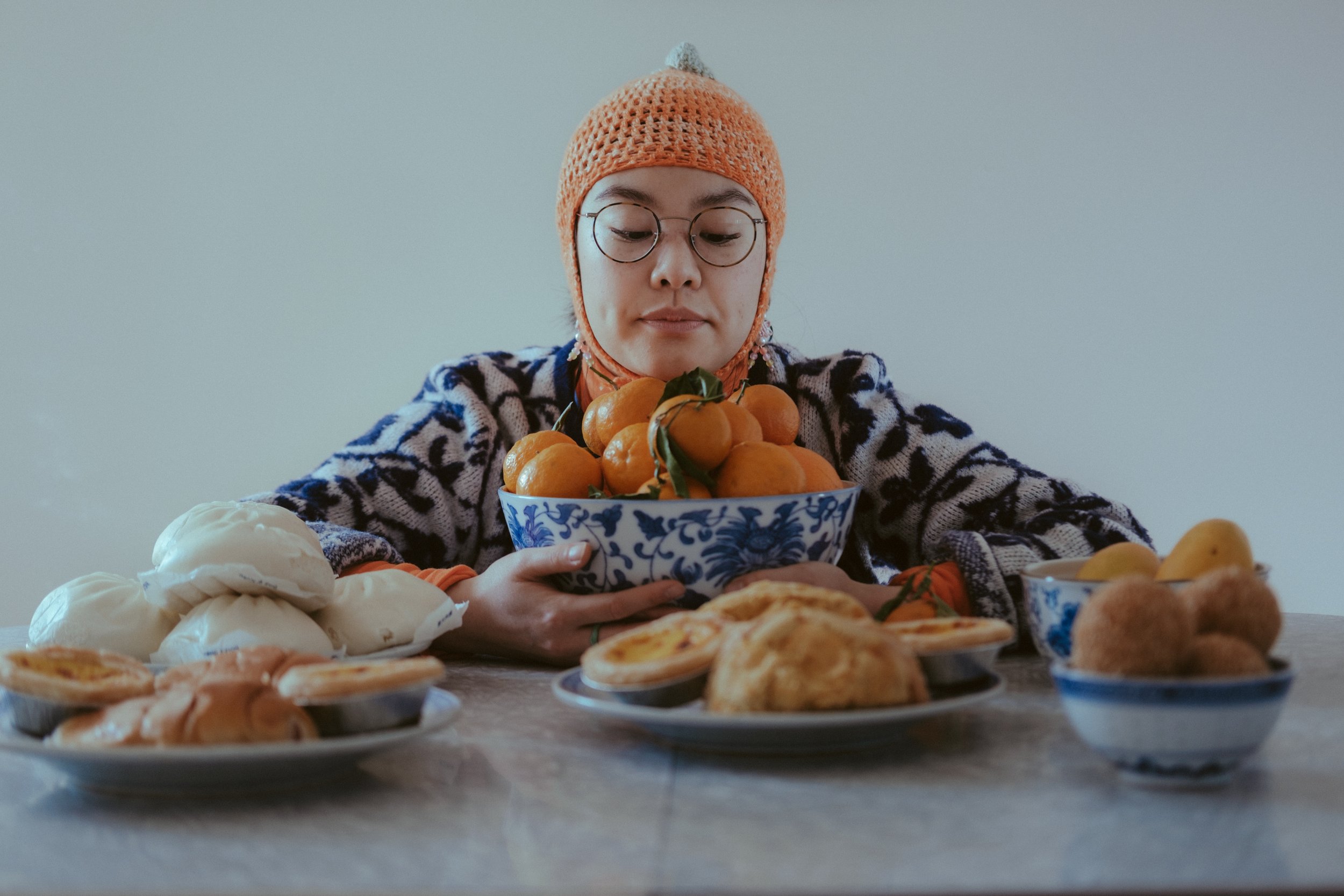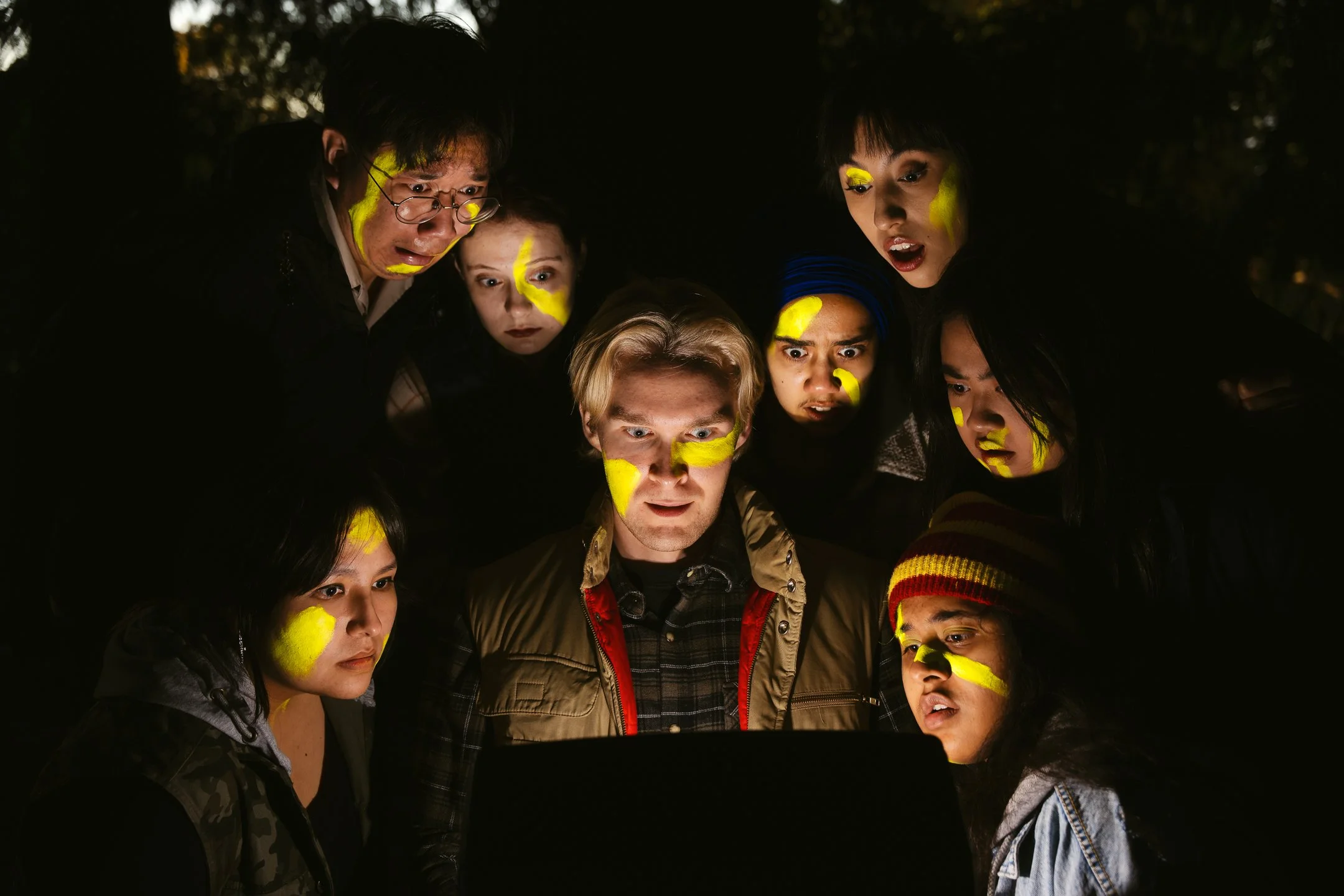An exercise in revealing & withdrawing at Amanda Sum’s New Age Attitudes: Live in Concert
/Minutes before her solo performance, theatre artist, songwriter, and musician Amanda Sum sat in the lobby of the Cultch’s Historic Theatre as the crowd poured in. There, she individually handed out an envelope containing a pop-up book, a pen, and a piece of white rabbit candy to each person in attendance.
An interactive experience that would break expectations from the get-go, New Age Attitudes: Live in Concert was not a concert in the traditional sense. With help from the pop-up book, the multifaceted performer guided the audience through her live show with selections from her 2022 jazzy, indie-pop album, while sharing deeply personal reflections that built upon the digitally-released project. Though not mandatory, audience participation was integral to the experience. By inviting the audience to write out prompts like "your simple pains and simple pleasures" for a chance to be read aloud, Amanda delicately probed the audience's willingness to join in her vulnerability.
Her debut full-length album, New Age Attitudes, intertwines self-aware reflections about her culture, age, gender, personal quirks, worldly burdens, and oppressive forces. She is no stranger to writing about everyday feelings of inadequacy and the struggle to connect. The live show brought these themes to life by laying bare the uncomfortable dynamic between performance and spectatorship. In the piano concert segment, the singer-pianist performed six songs that are not in the album, such as “I Don't Think I'm Ready For the Judgement,” which highlighted those rich tensions inherent to the show's format. Another song addressed the discomfort of being perceived, repeating "What are you doing to me?" over and over. In this live, intimate setting, the confessional lyricism felt even more candid than usual. Yet, despite the weighty emotional impact, there was a give and take. While eating an orange mid-performance and leaving the peels on top of the grand piano, Amanda injected some humor and mundanity throughout.
I caught up with Amanda a few days after her final performance. We discussed how embracing the awkwardness of exposure and staying true to her introversion led her to new ways of engaging with the structure of a music concert.
Why did you choose this format to showcase your debut album?
When I was digitizing the songs in the album, the process felt very set. I wanted to introduce an analogue element that allowed it to be more open. The first version of the pop-up book got mailed to people's homes, and I thought, if they're reading it on their couch, does that still count as a performance? I became fixated on defining these things, which often imply something quite flashy. I think it’s reflected in the show—that this idea of performance or concert is not something I want. The format of the live show evolved in large part from this yearning to gently redefine things as we go.
During the initial part of the show, you remain silent and communicate mostly through the text and prompts in the book. What drew you to include silence?
A room of people sitting in silence reading my innermost thoughts is quite awkward, and that's so juicy to me. It also feeds back to the idea of reading as a performative act. In the first little bit of the show, the book invites you to sign a contract between performer and audience. With silence, you have to buy-in to this awareness, but at the same time it's not pressurized. We’re letting each other in, but we still keep some things to ourselves.
There was an interesting contrast between your impulse to go inward and your confidence as a seasoned theatre performer.
There's definitely a tension. But I see acting as a different thing. I'm quite a reflective, inward person, but I also have a side that tries to engage with people in a bubbly way and that part of me comes out with acting. With songwriting, I'm very nervous about revealing. In this show, the first time you hear me is when I transition into the concert portion on the piano, and even though I’m singing about really personal things, I have to have my back to the audience—so I’m always creating some sort of barrier.
Can you tell me about the visual elements in the show, some of which we also find in your other work?
I wanted this really lo-fi, homey feel for the staging, for it to feel like you're welcomed in to observe me in my mundanity. I use my actual side table from home. On the album cover of New Age Attitudes, I wear a balaclava that makes me look like an orange and a sweater with a similar pattern to a bowl of oranges. I wear that same sweater for the show. In the music video for the song Awkward Bodies, I'm dressed like a shrimp dumpling. These things are representative of my growing up and my culture. Also, visually, yeah, it’s a bit quirky and silly, but at the root of it is pulling from a desire to blend in, wanting to be this inanimate thing that’s just sitting there observing.
What do you hope people took away from the show?
I was really touched when people talked about the way the show told things. It makes me feel like they were listening, not just to the vulnerable and personal things I talked about, but it had an effect on how it sat with them, on how they listen to each other and to me, and how I attend and listen to them.
In her own uniquely disarming way, Amanda commanded the stage with confidence. Her performance was unapologetic in its unconventional approach to self-expression, championing a tender rawness and an uncompromising self-preservation. New Age Attitudes: Live in Concert crafted a deliberate uncertainty through its form—and, in doing so, it offered a rare chance to reflect on and embrace the delicate tightrope that many of us teeter on when asserting our voice.
Follow Amanda Sum on Instagram (@amanduhsum), and stream New Age Attitudes on Bandcamp here or Spotify here.
Angie Rico (she/her) is a Mexican-born cultural worker, currently living and working in so-called Vancouver. Her primary mediums of communication are writing and the moving image. Her arts journalism covers film, visual arts, and theatre.







